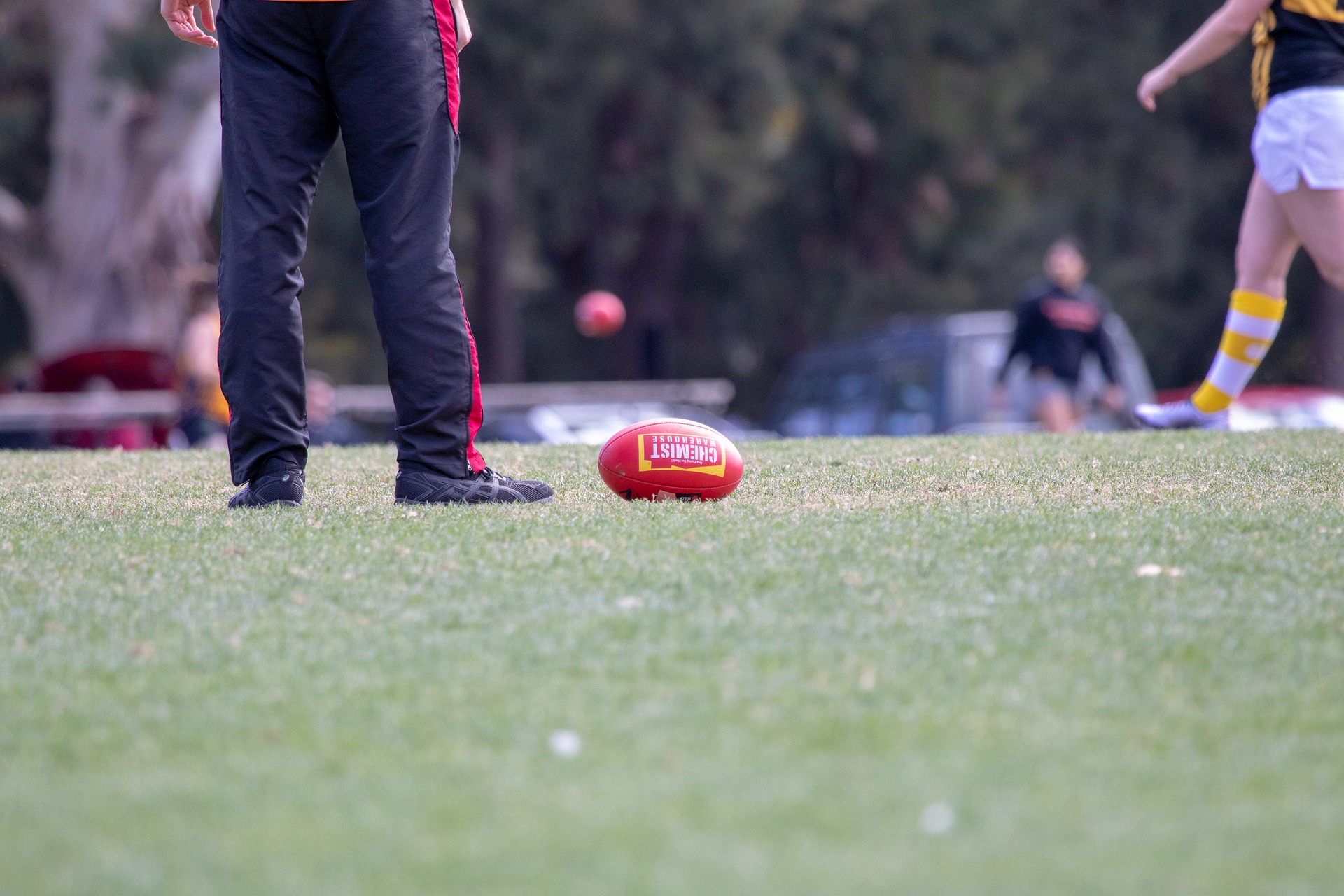By: Nathan Tucker
The cool fall air, leaves turning colors, it is football season in America, and no better time for “Better Know A Sport” to come back. For this football season edition, we look at a football that is not so familiar in America, one that is a little rounder.
This football takes us to the other side of the world, to Australia, as the title suggests, for Australian rules football! While called “football”, or more colloquially, “footy”, Aussie Rules football is a bit more similar to rugby than American football.
THE GAME (there’s a lot to this)
As just mentioned, Aussie rules football is akin to rugby. Unlike rugby, Aussie rules is played on an oval field, usually a cricket ground. Playing on such a large, open field requires large teams, and Aussie rules football teams have 18 players on-field, and four “interchange” or bench players.
There is no “offsides” rule like either American football or soccer, and players are allowed to roam wherever they please. Aussie rules teams are usually made up of six forwards up front, six “backmen” (or defenders), and six midfielders. Some wider forwards hug closer to the sidelines, and earn the title “wingmen”.
An Aussie rules football game at the highest level, the Australian Football League, consists of four 20-minute quarters. The clock is stopped along the same lines as American football, with going out of bounds, tackles that slow down play, or serious injury.
Each game starts with a “ball-up” similar to a jump ball in basketball. During a ball-up, the referee bounces the oblong football off the ground to bounce straight in the air, and a taller/jumpier player, known as a “ruckman”, leaps to claim the ball for their team.
The ball can be kicked, punched or smacked with an open hand, to propel it in a direction the player wants it to go. Throwing the ball like an American football is strictly forbidden, but volleyball-style smacks/punches are accepted.
A player may run with the oval-shaped football, but it must be bounced or dribbled like a basketball once every 15 meters or yards. Players can bump or tackle a running player, and when tackled, the player must dispose of the ball cleanly to another teammate or the other team, or risk being penalized for holding the ball.
If a player kicks the ball over 15 yards and it is caught, the catch is claimed as a “mark”. This stops the game, and allows the player to prepare an unobstructed kick towards the goal posts. If a player is not close enough to kick, or feels they can find a better advantage for their team, they may choose to “play on”, and forfeit the set shot opportunity.
I have gone through a number of paragraphs here and have not even mentioned how points are scored. There are a lot to Aussie rules football, and when you look at the game on television, you can really tell that there are a number of moving parts.
Aussie rules football consists of two methods of scoring: goals, worth six points, and behinds, worth a single point. Both are scored by getting the ball through four posts at each end of the oval field.
A goal is scored in Aussie rules when the football is kicked through the two taller posts in the middle. It can count on the fly, or on the bounce, as long as no other player or goalpost interferes.
A behind is scored when the ball passes between a middle goal post and a wider behind post at each end of the field, essentially a consolation for not getting a goal between the two middle goal posts.
THE HISTORY OF AUSSIE RULES
Compared to the more serious cricket and horse racing, early versions of “football” were often considered mere amusement, similar to how a destruction derby is viewed today. The first legitimate team was a “foot-ball club” organized by Tom Wills, captain of the Victorian cricket team in the mid 19th century.
Wills wanted to form a football team to keep him and his fellow cricketers sharp during the winter off-season. Wills was born in Australia, but learned an early form of rugby while at school in England. Early games played by Wills’s teams were held outside of the Melbourne Cricket Ground, and used trees for the goal posts at each end of the field.
Since the early 20th century, Aussie rules football has been thought to be derived from Gaelic football in Ireland. There is no evidence that supports this, and the game appeared in Australia long before Gaelic’s similar evolution in Ireland.
Over the 19th century, the sport spread from Victoria and Melbourne across Australia, and regional rivalries developed. In 1896, the first professional Aussie rules league was started, the Victorian Football League, and was an instant hit among fans.
Both World Wars were detrimental to the sport in Australia. Many of the best Aussie rules footballers were drafted to war, and the sport suffered tremendously. Matches were played by Australian soldiers worldwide, but the game at home fell victim to multiple professional teams being forced to shut their doors after the World Wars.
The VFL marched onward, depleted, for decades, and started to grow again right before the turn of the millennium. The league changed its name to the current Australian Football League, and added three teams outside of the Victorian province in the 90s. Two more teams were added to the league in 2011. Currently, there are 18 teams in the AFL.
The AFL Grand Final, traditionally held at the Melbourne Cricket Ground, less than a mile away from where Tom Wills founded the game nearly two centuries ago, is the sport’s version of the Super Bowl. Last year’s Grand Final was the highest-attended professional sporting event on the planet, with over 100,000 making their way to Melbourne for the final of the 2019 AFL season.




